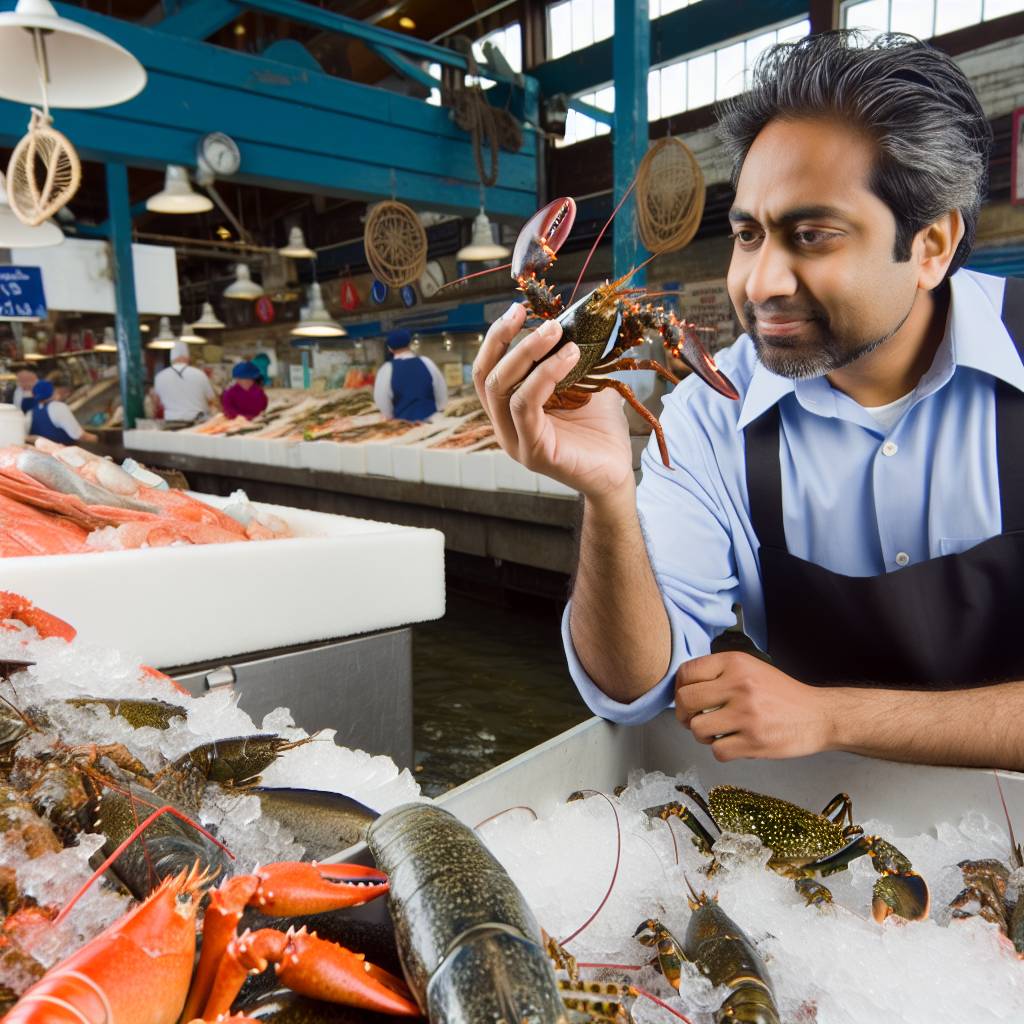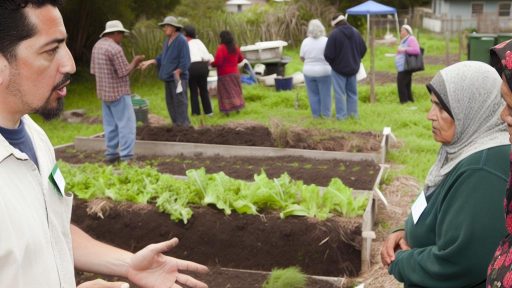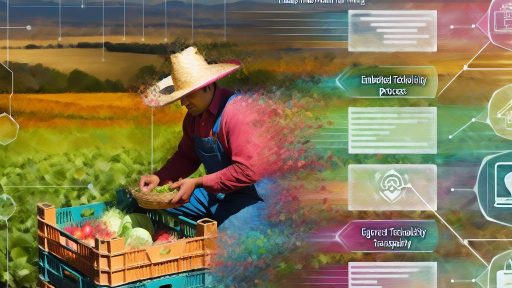Introduction to Farm-to-Restaurant Programs
Farm-to-restaurant programs connect local farms with nearby dining establishments.
These initiatives aim to enhance the sustainability of the seafood supply chain.
By fostering direct relationships, chefs can select the freshest ingredients.
Additionally, local sourcing supports the regional economy and reduces carbon footprints.
The Importance of Seafood Sourcing
Seafood is a vital part of many culinary traditions worldwide.
However, overfishing and unsustainable practices threaten marine ecosystems.
Farm-to-restaurant programs help combat these challenges through responsible sourcing.
Restaurants that prioritize sustainable seafood contribute to healthier oceans.
Benefits of Farm-to-Restaurant Programs
These programs offer numerous advantages for both farmers and restaurants.
- Chefs gain access to fresher, higher-quality seafood.
- Farmers receive fair prices for their catch.
- Local communities benefit from strengthened economic ties.
Moreover, consumers appreciate transparency in their food sources.
Key Components of Successful Programs
Effective farm-to-restaurant programs include essential components.
- Education on sustainable practices for both chefs and consumers.
- Clear communication channels between seafood providers and restaurants.
- Commitment to seasonal menus that feature local ingredients.
These elements ensure success and promote sustainability effectively.
Challenges in Implementation
Despite their benefits, these programs face several hurdles.
One major challenge is maintaining consistent supply from fishermen.
Additionally, fluctuations in seafood availability can affect menu planning.
Transform Your Agribusiness
Unlock your farm's potential with expert advice tailored to your needs. Get actionable steps that drive real results.
Get StartedRestaurants must also navigate regulatory hurdles associated with sourcing.
However, innovative solutions can help mitigate these issues.
Importance of Sustainable Seafood Practices
Protecting Marine Ecosystems
Sustainable seafood practices play a critical role in protecting our marine ecosystems.
They help preserve the biodiversity of aquatic life.
Overfishing poses a significant threat to fish populations.
Moreover, it disrupts the delicate balance of marine habitats.
Enhancing Fish Populations
Implementing sustainable fishing methods enhances fish populations over time.
These practices allow fish stocks to recover effectively.
Consequently, they support healthier marine environments.
Responsible sourcing ensures that fisheries remain productive for future generations.
Promoting Economic Stability
Engaging in sustainable seafood practices fosters economic stability within coastal communities.
It promotes local employment and sustains livelihoods.
Restaurants and consumers benefit from fresh, high-quality seafood.
Supporting local fisheries encourages a thriving marketplace.
Consumer Awareness and Health
Consumers become more aware of their seafood choices through sustainable practices.
This knowledge encourages healthier eating habits.
Eating sustainably sourced seafood contributes to overall health.
Furthermore, it reduces exposure to harmful chemicals and pollutants.
Traceability and Transparency
Sustainable seafood programs enhance traceability and transparency in the supply chain.
Consumer confidence grows when they know the source of their food.
Clear labeling and documentation ensure responsible sourcing.
This accountability builds trust between consumers and seafood providers.
Key Benefits of Farm-to-Restaurant Relationships
Enhancing Freshness and Quality
Farm-to-restaurant partnerships prioritize freshness in seafood deliveries.
This approach often results in shorter supply chains.
Showcase Your Farming Business
Publish your professional farming services profile on our blog for a one-time fee of $200 and reach a dedicated audience of farmers and agribusiness owners.
Publish Your ProfileAdditionally, it promotes the use of seasonal ingredients.
Restaurants benefit from superior quality seafood.
Fresh seafood enhances the overall dining experience.
Building Trust with Customers
Transparency is a key element in farm-to-restaurant programs.
Consumers appreciate knowing the source of their seafood.
Restaurants that share this information build stronger relationships with diners.
Trust fosters customer loyalty and repeat business.
Supporting Local Economies
These programs often support local fishers and farmers.
By choosing local, restaurants boost community economies.
Local sourcing reduces transportation costs and emissions.
This can also encourage responsible fishing practices.
Encouraging Sustainable Practices
Farm-to-restaurant models promote sustainable fishing methods.
They encourage restaurants to consider environmental impacts.
Additionally, this approach often leads to better stewardship of marine resources.
Sustainable seafood maintains fish populations for future generations.
Improving Menu Diversity
By partnering with diverse suppliers, restaurants can broaden their menus.
This can include unique local varieties not found in mainstream markets.
Such diversity attracts customers seeking novel dining experiences.
It allows chefs to experiment with seasonal and regional flavors.
Strengthening Community Connections
Farm-to-restaurant programs foster relationships within local communities.
They create networks among chefs, fishermen, and farmers.
These connections enhance collaboration and knowledge sharing.
Furthermore, they promote a sense of community among consumers.
Find Out More: Farm Fresh Delivery Services for Organic Food Lovers
Challenges Faced by Seafood Providers in Sustainable Practices
Economic Pressures
Seafood providers often encounter intense economic pressures.
They must balance sustainability initiatives with profit margins.
Market volatility can further strain their resources.
Moreover, sourcing sustainable seafood may increase costs.
This results in difficulty for smaller providers to compete.
Regulatory Challenges
Compliance with seafood regulations can be daunting.
Often, these rules vary significantly between regions.
Failure to comply can lead to severe penalties.
Understanding these regulations requires additional resources.
Thus, navigating these complexities remains a significant hurdle.
Consumer Awareness and Demand
Consumer awareness of sustainable seafood is still growing.
Many consumers lack knowledge about sourcing practices.
This lack of awareness affects demand for sustainable options.
Additionally, misleading certifications can confuse customers.
Consequently, providers face challenges in building trust.
Supply Chain Limitations
Signature transactions in the seafood supply chain often hinder sustainability.
Showcase Your Farming Business
Publish your professional farming services profile on our blog for a one-time fee of $200 and reach a dedicated audience of farmers and agribusiness owners.
Publish Your ProfileProviders struggle with inconsistent fishing practices.
Furthermore, limited access to local suppliers complicates sourcing.
Logistical challenges can arise during transportation.
These barriers affect timely delivery and product freshness.
Environmental Concerns
Environmental degradation poses risks for seafood providers.
Overfishing severely impacts marine ecosystems.
Pollution and climate change further threaten aquatic life.
Sustainable practices often require long-term commitment.
This commitment may not yield immediate economic returns.
Find Out More: Enhancing Nutrient Cycles Through Integrated Livestock And Permaculture Practices
Case Studies: Successful Farm-to-Restaurant Initiatives
Savory Seafood in San Francisco
Green Wave Seafood partnered with Spirited Spoon Restaurant in San Francisco.
This collaboration focuses on local and sustainable seafood sources.
The restaurant features fish caught weekly from nearby waters.
Customers appreciate the freshness and quality of their meals.
Moreover, this partnership strengthens local fishing communities.
Fresh Horizons: A Maine Success Story
Ocean Harvest Farms joined forces with Coastal Bistro in Maine.
This initiative showcases seasonal catches from local waters.
They emphasize the use of sustainable fishing methods.
Chefs at Coastal Bistro create unique dishes based on available seafood.
Guests enjoy a constantly evolving menu with local charm.
Florida Flavor: Sustainable Shrimp Farming
Sunshine Shrimp Co. collaborated with Savor Florida Restaurant Group.
This partnership highlights environmentally-friendly shrimp farming practices.
Restaurants use shrimp raised in eco-conscious waters.
Customers often comment on the superior taste and quality.
Additionally, this initiative educates patrons about sustainable practices.
Pacific Innovations: Salmon Farming
Wild Rivers Salmon established a relationship with Pure Plate Restaurant.
This partnership focuses on responsibly farmed salmon.
Pure Plate features a special salmon dish every week.
Each dish incorporates seasonal vegetables sourced locally.
Customers gain insight into sustainable seafood farming through this initiative.
Connecting Communities: Educational Outreach
Many farm-to-restaurant programs foster educational initiatives.
For instance, Chefs for Sustainability offers workshops to local restaurants.
These workshops teach chefs about local seafood sourcing methods.
Participants learn to appreciate the impact of their choices.
Education encourages chefs to use sustainable ingredients more frequently.
Find Out More: Food Traceability in Farming and Its Role in Consumer Trust

Steps to Establish Effective Farm-to-Restaurant Supply Chains
Identify Sustainable Seafood Sources
Begin by researching local seafood farms that prioritize sustainability.
Consider certifications like Marine Stewardship Council or Aquaculture Stewardship Council.
Contact suppliers to learn about their farming practices and environmental impacts.
Build Relationships with Farmers
Create strong partnerships with sustainable seafood providers.
Showcase Your Farming Business
Publish your professional farming services profile on our blog for a one-time fee of $200 and reach a dedicated audience of farmers and agribusiness owners.
Publish Your ProfileEngage in regular communication to understand their offerings and availability.
Visit farms to see their operations and commitment to sustainability firsthand.
Develop a Transparent Supply Chain
Ensure traceability from farm to table for all seafood products.
Implement tracking systems to document the journey of products.
Share this information with consumers to promote trust and transparency.
Implement Efficient Logistics
Design a logistics plan that minimizes waste and maximizes freshness.
Coordinate delivery schedules to align with restaurant needs.
Utilize eco-friendly packaging to further reduce environmental impacts.
Educate Restaurant Staff
Provide training on sustainable seafood practices for your staff.
Encourage staff to share this knowledge with customers.
Host tastings to help staff familiarize themselves with available seafood.
Promote Sustainable Seafood on Menus
Highlight sustainable seafood options prominently on restaurant menus.
Use clear labeling to inform customers about the sources of your seafood.
Share stories about featured local farms to enhance guest experience.
Engage with the Community
Host events that focus on sustainable seafood education.
Collaborate with local organizations to spread awareness about sustainable practices.
Encourage customer involvement through initiatives like seafood sourcing events.
Delve into the Subject: Farm Fresh Delivery Services for Urban Communities
Promotional Strategies to Highlight Sustainable Seafood
Building Awareness through Marketing
Effective marketing starts with awareness.
Utilize social media platforms to share stories.
Engage customers with visuals of the seafood supply chain.
Highlight the fishermen’s sustainable practices.
Additionally, educational content can enhance engagement.
Share articles about sustainable fishing methods.
Incorporate infographics that simplify complex information.
Collaborating with Local Influencers
Local influencers offer unique promotional opportunities.
Partnering with well-known chefs can amplify your message.
Encourage them to showcase your seafood in their dishes.
Create content together highlighting sustainable seafood.
This collaboration can reach a wider audience.
Moreover, unique recipes can attract attention.
Participating in Community Events
Participating in local events increases visibility.
Consider sponsoring food festivals or farmers’ markets.
Set up booths to educate attendees about sustainability.
Offer tastings of your seafood products.
Engage visitors through interactive activities.
Collect feedback and build customer relationships.
Leveraging Email Campaigns
Email campaigns provide direct communication with customers.
Create engaging newsletters highlighting your seafood.
Include tips on cooking and sustainability-related content.
Showcase Your Farming Business
Publish your professional farming services profile on our blog for a one-time fee of $200 and reach a dedicated audience of farmers and agribusiness owners.
Publish Your ProfileUse testimonials from satisfied customers to build trust.
Additionally, share updates on new products and promotions.
This keeps customers informed and engaged.
Incorporating Loyalty Programs
Loyalty programs can promote repeat business.
Offer rewards for purchasing sustainable seafood.
Consider providing discounts for loyal customers.
Encourage referrals through bonus incentives.
Recognize and celebrate your frequent customers.
This builds community and encourages advocacy.
Future Trends in Sustainable Seafood and Restaurant Collaborations
Growing Consumer Awareness
Consumers are becoming increasingly aware of sustainability issues.
This awareness is driving demand for responsibly sourced seafood.
Restaurants must adapt to these evolving consumer preferences.
Transparency in sourcing will become a key factor in customer loyalty.
Furthermore, customers appreciate when restaurants share their sustainability efforts.
Innovative Farm-to-Restaurant Partnerships
Farm-to-restaurant models are gaining traction in the seafood industry.
Such partnerships ensure fresh and sustainable seafood is served.
Additionally, they foster community ties between fishermen and restaurateurs.
Collaborations can highlight local fish species that often go unnoticed.
Restaurants may even feature special menus showcasing seasonal catches.
Technology’s Role in Sustainability
Technology is revolutionizing how restaurants source seafood.
Tracking software can ensure seafood is sustainably caught and delivered.
Moreover, digital platforms can connect restaurants with local suppliers directly.
Blockchain technology may enhance transparency in seafood supply chains.
These advancements will help combat seafood fraud and mislabeling.
Certification and Standards Improvements
Third-party certifications are becoming vital in the seafood industry.
These standards guarantee that seafood is harvested sustainably.
Restaurants will increasingly highlight certified seafood on their menus.
Moreover, this trend will motivate suppliers to adhere to best practices.
In turn, these improvements can boost consumer confidence in seafood purchasing.
Focus on Aquaculture Innovations
Aquaculture is evolving to meet seafood demand sustainably.
Innovations in farming practices can reduce environmental impacts.
For instance, integrated multi-trophic aquaculture can balance ecosystems.
Restaurants can play a key role by promoting sustainably farmed species.
As a result, this approach may alleviate pressure on wild stocks.




